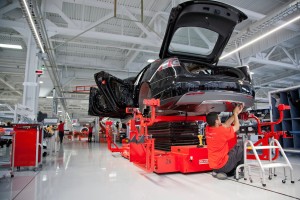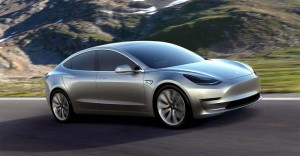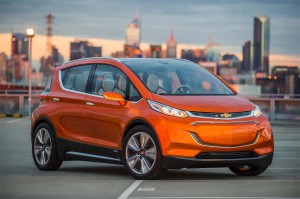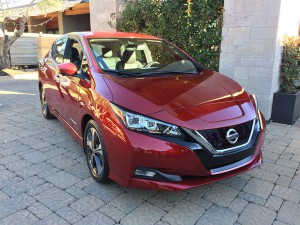
Tesla is quickly approaching the 200,000 vehicle limit that ends the $7,500 federal government tax incentive for EV buyers.
With its manufacturing problems largely overcome, Tesla sales have been booming in recent months, the California battery-carmaker delivering more cars in the U.S. than luxury mainstay Mercedes-Benz in the most recent quarter.
But whether Tesla can maintain that momentum is uncertain, especially with federal tax incentives of as much as $7,500 about to go away, even as a flood of new, long-range electric alternatives come to market, complete with those tax credits.
Tesla is advising potential buyers that they will have only until the end of Monday, Oct. 15, to place a an order for one of its new vehicles and be sure of getting the $7,500 federal incentive. Starting in January, the credits will be halved. They will be cut again mid-year, and then vanish entirely under the revised U.S. tax law passed by Congress last December.
Industry analysts have said it is difficult to tell precisely what impact the givebacks have had on Tesla sales in the first place. “People who are buying a Model 3 aren’t shopping based on price,” said Stephanie Brinley, of IHS Automotive. “They simply want a Tesla.”
(Tesla hits third quarter production target. Click Here for the story.)

With Tesla's production woes behind it, the company is going to find out if its the cars or the tax credits driving sales.
And many have been waiting for nearly two years, Tesla beginning to collect early “reservations” in late 2016 after initially unveiling its first mainstream offering. It had hoped to quickly catch up on demand once production officially launched in July 2017, but ran into what CEO Elon Musk described as “production hell” at both its Gigafactory battery plant and at the company’s Fremont, California assembly line.
Production problems have been largely resolved in recent months, Tesla claims, the plant now steadily assembling more than 6,000 vehicles – including the Model 3 and older Models S and X – each week.
According to data compiled by Atherton Research, Tesla sold 69,925 vehicles in the U.S. during the third quarter of this year, blowing by Mercedes which reported sales of 66,542 vehicles. Tesla came within 1,754 vehicles of toppling the current leader of the U.S. luxury market, BMW. And Atherton expects Tesla will claim the crown during the current quarter.
The automaker itself recently reported that worldwide deliveries came to 83,500 between July and September, “more than 80% of the vehicles we delivered in all of 2017.” And Tesla reportedly delivered twice as many Model 3 sedans during the quarter than it did during the first half of the year.

The Chevy Bolt is just the first of several GM EVs coming in the next 12 months and, for now, is Tesla's biggest competitor.
While analysts like Brinley believe early demand for the Model 3 has been relatively price-insensitive, many believe that will shift in the longer-term as Tesla’s market shifts from EV proselytizers towards a more mainstream buyer. And those potential customers are expected to be more focused on price.
That could cause problems as the federal tax credits are phased out for the California-based automaker. Under current rules, a carmaker gets to offer up to $7,500 on a qualified model until sales reach 200,000 vehicles. Tesla reached that figure during the third quarter but will be able to continue offering the full incentive up until the end of this year. It will then be cut to $3,750 through mid-2019 when it is again halved. It phases out entirely on Jan. 1, 2020.
(Click Here for more about Hyundai’s new Kona EV crossover.)
The problem for Tesla is that only one other automaker is about to reach the 200,000 vehicle threshold, General Motors is likely to see its tax credits begin to phase out sometime next year. Nissan will be the next to trip the timer.
But there are a number of other manufacturers that are now entering the battery-car space with long-range models targeting a wide range of market segments and prices, including Hyundai, Kia and Volkswagen, in the mainstream, and Audi, Mercedes and Porsche in more rarified territory. By the end of next year there will be at least a dozen products competing with the three Tesla Model lines and most will retain their $7,500 incentives.
“That’s one reason I am not sure if the pace of demand for Tesla is sustainable,” said Brinley, adding that even if the upstart automaker could somehow retain the $7,500 credits, “Not everyone is going to want a Tesla, in spite of the way the headlines are written.”
While it’s far from clear Tesla can maintain the momentum, the flood of new models should charge up electric vehicle sales overall, Pasquale Romano, the CEO of Chargepoint, the country’s leading provider of public and private charging stations, told TheDetroitBureau.com.
“A year ago, these conversations started out (with the question) why aren’t customers buying electric vehicles? Our response was that they just didn’t like what was being sold,” said Romano, noting that most of the offerings on the market had limited range and high prices.
(To see more about the wave of competition coming for Tesla, Click Here.)
With the arrival of more long-range models, many of them priced under $40,000, the battery-electric vehicle segment of the U.S. new car market has grown from 0.5% to nearly 1% this year. It’s still a small share but one of the only segments to show substantial growth at a time when the overall industry has been slowing down.


If BEVs are ever required to pay a road tax, will that impact their sales appeal?
Eventually, as the numbers rise, they will have to. But a broad change in taxation seems a certainty as mileage rises, anyway.